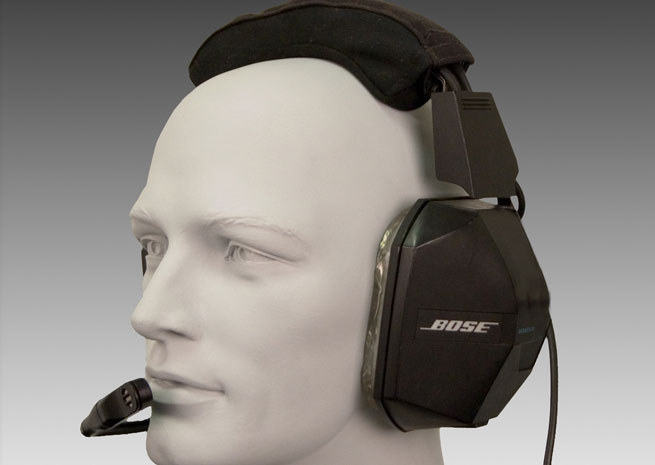Framingham, Mass.-based Bose first entered the aviation headset business in 1978 after founder Dr. Amar Bose had a disappointing experience during a commercial flight using electro-dynamic headphones for the first time. Now the company is celebrating its twenty-fifth anniversary in the aviation headset business.
On that original flight in 1978, “the noise of the aircraft overcame the music he was trying to listen to,” said Sean Garrett, vice president of the Bose Noise Reduction Technology Group, in an email to AOPA. “That experience led him to believe Bose could develop a technology that could significantly improve on what was, at the time, the state of the art; a technology that could cancel unwanted noise while preserving the sound you want to hear.”
Bose assembled a team of engineers who started working on a solution. “In 1986, as work on this technology continued, our engineers learned about the Voyager flight that Dick Rutan and Jeana Yeager were planning. It was an attempt to circumnavigate the globe without refueling,” said Garrett. “Because the Voyager engineers were trying to reduce the weight of the plane as much as possible, there was no insulation in it, which meant the plane was extremely loud.”
Bose engineers thought the flight would allow them to gain valuable field experience and confirm that the technology had real value and benefit for pilots, said Garrett. “The entire Voyager experience confirmed our assumptions and provided insights that helped us continue our research and development, ultimately leading to the introduction of the Bose Aviation Headset in 1989, which was the first commercially available active noise reduction system in the world,” he said.
The Bose Aviation Headset was the first commercially available active noise reduction system in the world. “This technology delivered significant reduction in background noise which allowed pilots to hear their audio and communications more clearly and listen to it at a lower volume setting,” said Garrett. “Since then, Bose has introduced four generations of aviation headsets with ongoing improvements in the areas of comfort, noise reduction and overall audio performance, including communications clarity.”
The first step Bose took was to have people experience the benefits and difference the technology offered, said Garrett. “We approached the Voyager flight team and they agreed to use our headsets on the first non-stop unrefueled flight around the world,” he said. “We believed that if we could demonstrate our technologies to pilots then it would be their experience and advocacy that would compel people to own and use the product themselves.”
After experiencing Bose headsets, pilots shared their excitement with others, said Garrett. “Since then, we have continued to work hard to deliver clear, honest and relevant messages to the aviation market about our headsets and to have pilots try them,” he said. “Pilot advocacy remains strong to this day and is an important element in our ongoing success. The aviation headset and underlying innovation behind the technology, along with the benefits it delivered to pilots, drove advocacy. It truly was the pilot’s experience that has made the Bose brand what it is today in aviation.”
Bose has had continuous research in the area of active noise reduction and aviation headsets for the last 25-plus years, said Garrett. “We’ve worked hard to find ways to enhance the pilot experience every day since Dr. Bose’s research initiative began back in 1978, and we are fully committed to bringing Bose performance to pilots as aviation and surrounding technology evolves,” he said.



